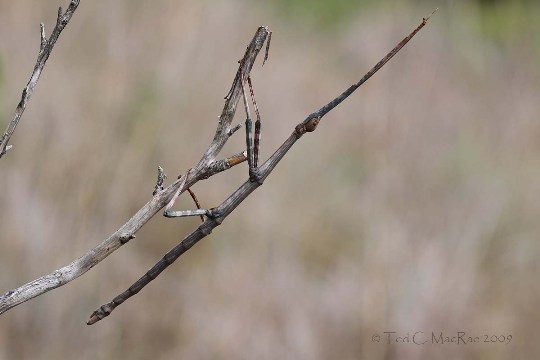
Habitat & Geography
Habitat:
Megaphasma detricus can be found mostly on wooden floors of
forests, trees, shrubs, and grasslands. The trees that these giant
walking sticks are found are mostly elm and mesquite(Arment
2006). These trees
and shrubs can vary in height from a few inches all the way to one
hundred feet (Wilkins 1951). However,
Megaphasma detricus are most abundant closer to the ground.
This species of insects are also found on grapevines which they will
eat as well. A reason for living in these certain habitats is the
use of camouflage to hide from predators. According to Broyles in
2000, Megaphasma detricus
choose to live in a moist habitat for the best survival rate of
offspring hatching (Broyles 2000). In a
study done by Wilkins in 1951, he found the species in close
proximity with each other either mating or in sets within a foot of
other giant walking sticks (Wilkins 1951).
Geography:
Wilkins also helped determine the distribution
of these giant walking sticks ranging from Louisiana and Indiana on
the east, Wisconsin and Iowa on the north, and Texas and Kansas on
the west. Though, they are mostly prominent in the central and
southern parts on the United States such as Texas, they have been
found more places throughout time like Mexico and Wisconsin (Wilkins
1951).
Megaphasma detricus was first discovered in Opelousas, Louisiana. These giant walking sticks are closely related to Diapheromera carolina and Diapheromera femorata in the kind of habitat they can be found (Wilkins 1951).

